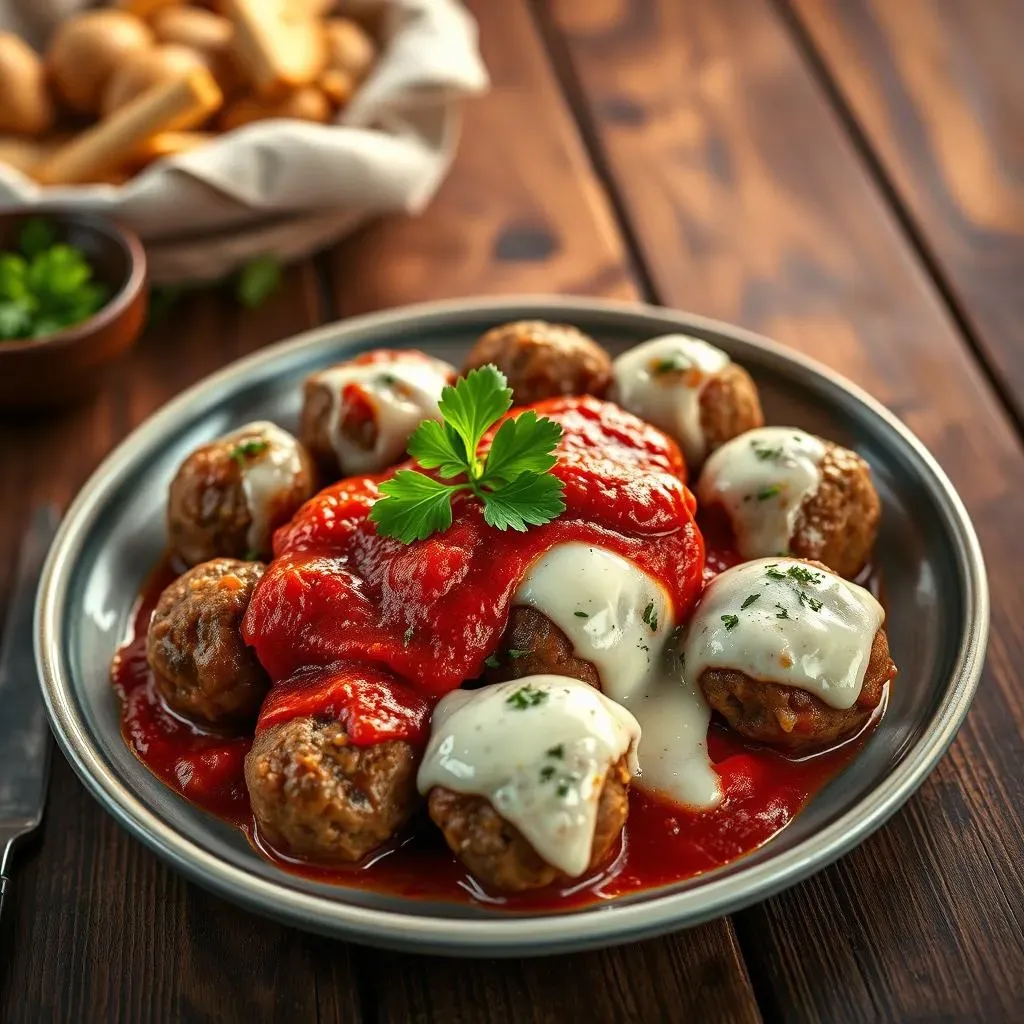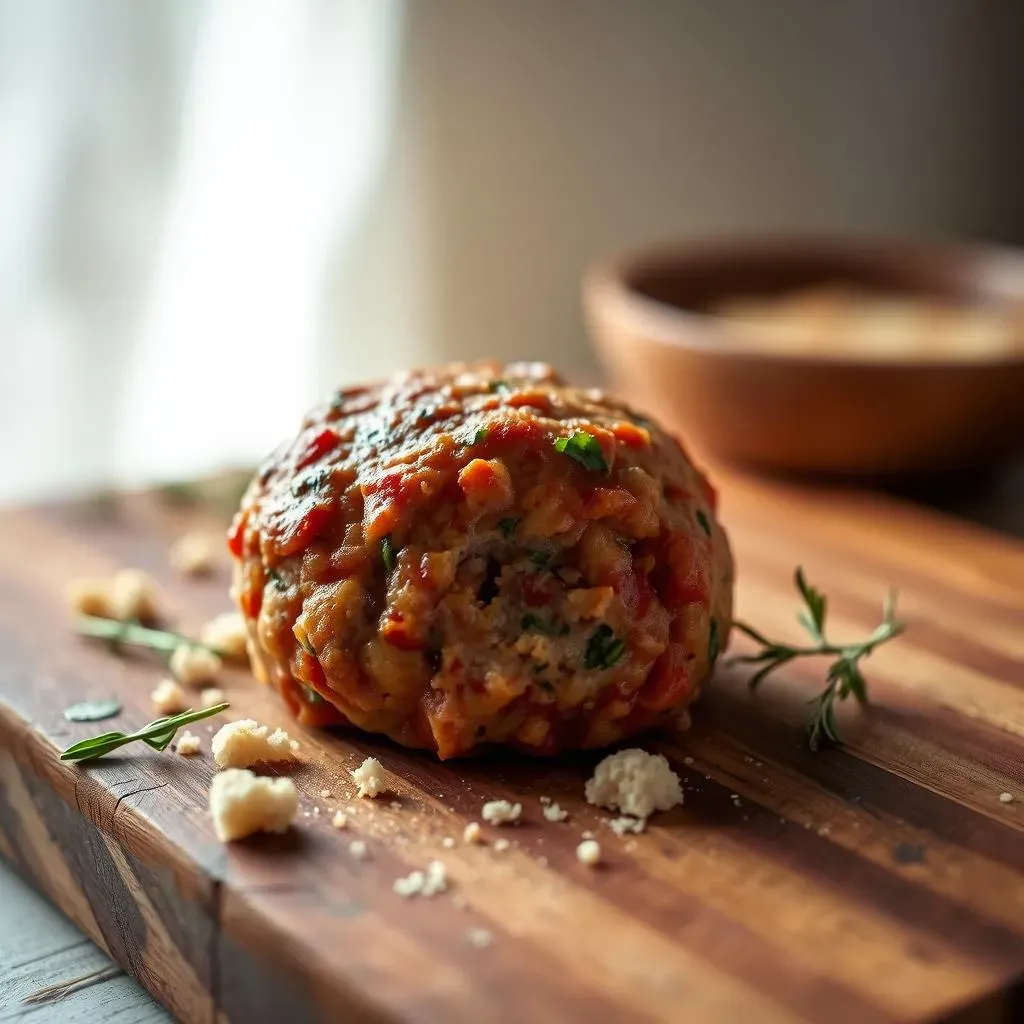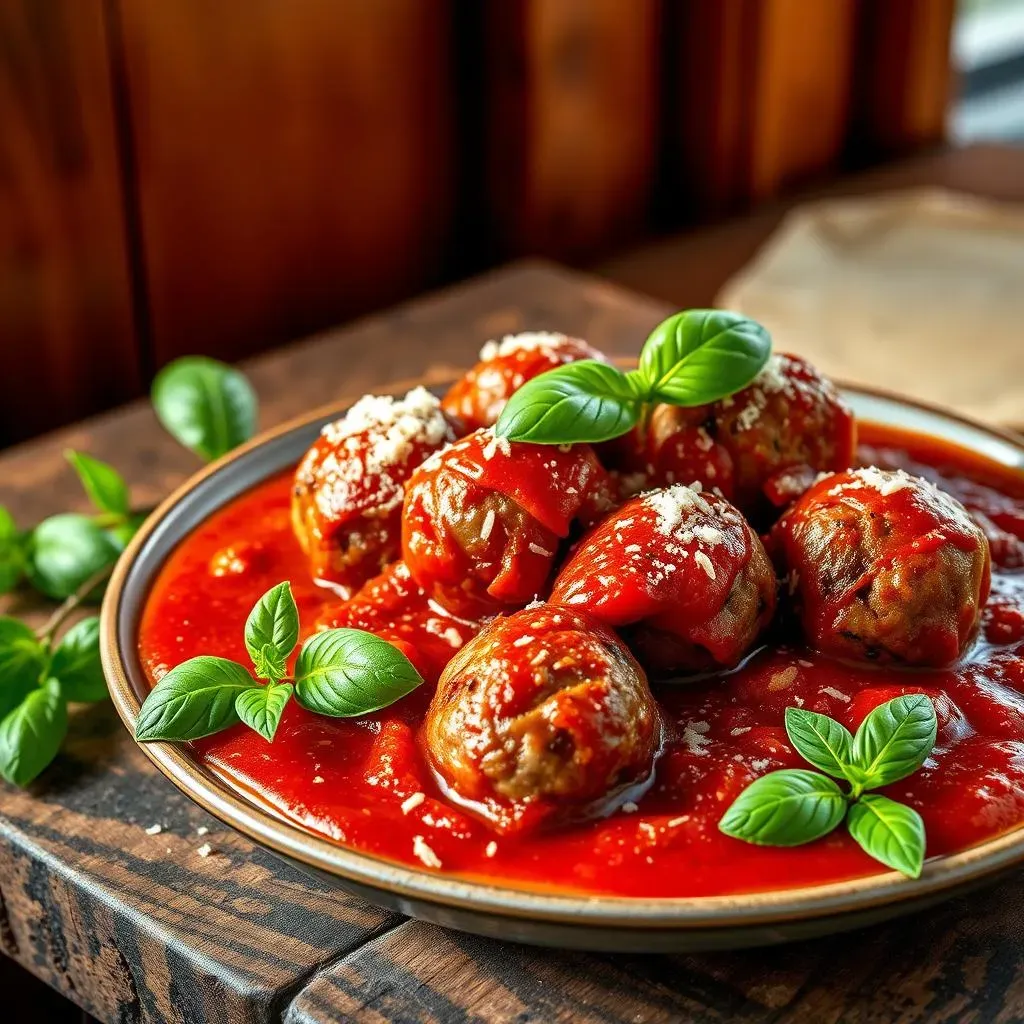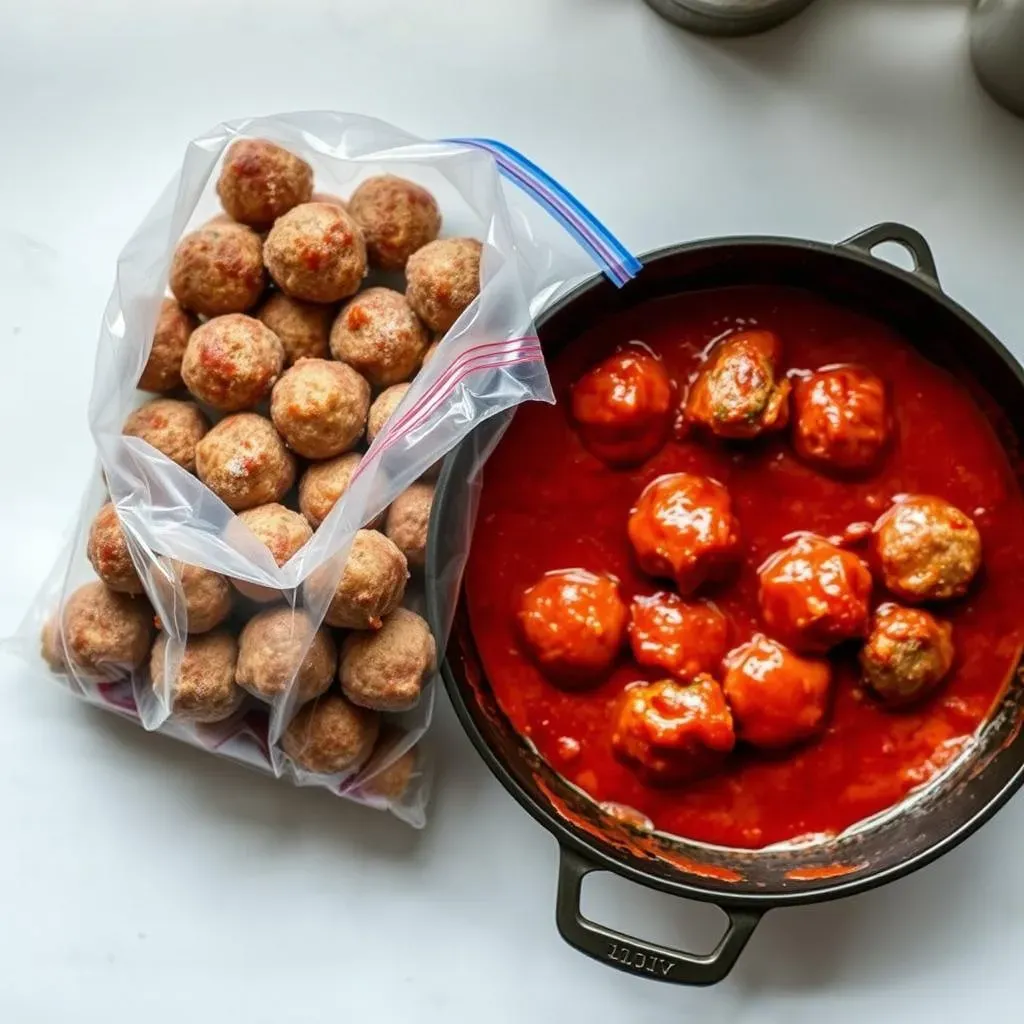Craving that classic Italian comfort food? Nothing beats a plate of spaghetti topped with tender, juicy meatballs, simmered in a rich tomato sauce. Forget the store-bought stuff! This is all about creating an authentic, family-style meal with a truly great homemade italian style meatballs recipe. This recipe, inspired by generations of Italian-American cooks, will guide you through every step of the process. From selecting the perfect blend of meats to mastering the art of the "panade," you'll learn how to create meatballs that are bursting with flavor and melt in your mouth. We'll explore different cooking methods, from stovetop simmering to oven baking, and even show you how to freeze your creations for a quick and easy weeknight dinner. So, roll up your sleeves, gather your ingredients, and get ready to experience the joy of making truly exceptional homemade Italian meatballs!
The Best Meat for Your Homemade Italian Style Meatballs Recipe

The Best Meat for Your Homemade Italian Style Meatballs Recipe
Ground Beef: The Foundation
Let's talk meat! When it comes to crafting the perfect meatball, the blend of meats you choose is crucial. Ground beef is often the cornerstone, providing that rich, savory base we all crave. But not just any ground beef will do. Opt for ground beef chuck, which typically has an 80/20 lean-to-fat ratio. That fat is your friend; it's what keeps the meatballs moist and flavorful during cooking. Leaner ground beef can result in dry, crumbly meatballs, and nobody wants that.
You might see other cuts recommended, but chuck strikes a great balance between flavor and affordability. It's readily available at most grocery stores, making it a convenient choice for your homemade italian style meatballs recipe. Think of it as the canvas upon which you'll paint the rest of the flavor profile with other meats and seasonings.
Pork and Veal: Adding Depth and Complexity
Now, while ground beef chuck is a solid foundation, adding other meats elevates your meatballs to a whole new level. Ground pork is a classic addition, bringing a sweetness and tenderness that complements the beef beautifully. Look for ground pork with a similar fat content to the chuck, around 80/20. The pork fat renders during cooking, creating a luscious, juicy meatball that's hard to resist.
For an even more sophisticated flavor, consider adding ground veal. Veal has a delicate, slightly sweet flavor that adds a layer of complexity without overpowering the other meats. It also contributes to a more tender texture. If you can't find ground veal, don't sweat it; the beef and pork combination alone will still deliver fantastic results. But if you're feeling adventurous, give veal a try – you might just discover your new secret ingredient for the best homemade italian style meatballs recipe!
Key Ingredients for Authentic Homemade Italian Style Meatballs

Key Ingredients for Authentic Homemade Italian Style Meatballs
Alright, now that we've nailed down the meat, let's dive into the other essential ingredients that'll transform your meatballs from "meh" to "magnifico!" These are the building blocks of flavor, the elements that give your homemade italian style meatballs recipe that authentic Italian soul. We're talking about the stuff that makes your nonna proud – the herbs, the cheese, the breadcrumbs, and that secret weapon for ultimate tenderness: the panade.
First up, let's talk about aromatics. Garlic is non-negotiable. Freshly minced garlic, not that jarred stuff, is what you want. It infuses the meatballs with that pungent, savory goodness that's so characteristic of Italian cooking. And don't skimp on it! Next, fresh parsley, or basil, finely chopped, adds a bright, herbaceous note that balances the richness of the meat. These fresh herbs are crucial; dried herbs just don't pack the same punch.
Ingredient | Why It Matters | Pro Tip |
|---|---|---|
Fresh Garlic | Adds pungent, savory flavor | Mince finely for even distribution |
Fresh Parsley/Basil | Provides bright, herbaceous notes | Chop just before adding to the mix |
StepbyStep Guide: Mixing and Forming Your Italian Meatballs

StepbyStep Guide: Mixing and Forming Your Italian Meatballs
so you've got your amazing meat blend and all those flavorful ingredients ready to go. Now comes the crucial part: mixing and forming! This is where a little bit of technique makes a huge difference. The goal is to create meatballs that are tender and juicy, not tough and dense. And the secret? Gentle handling. Overmixing is the enemy here; it develops the gluten in the breadcrumbs and the proteins in the meat, resulting in a meatball that's more like a hockey puck than a culinary delight. We want to avoid that at all costs when crafting our homemade italian style meatballs recipe.
Start by gently combining all the ingredients in a large bowl. Use your hands – they're the best tools for this job. But resist the urge to knead the mixture like you're making bread. Instead, use a light, folding motion to incorporate everything evenly. Think of it as gently coaxing the ingredients together, not forcing them. You want everything to be just combined, no more, no less. A light touch is key to achieving that perfect, melt-in-your-mouth texture.
Once everything is combined, it's time to form the meatballs. Again, gentle handling is paramount. Don't pack the meat mixture tightly; instead, use a light scooping motion to create loosely formed balls. Aim for meatballs that are roughly the same size – about 1.5 to 2 inches in diameter is a good starting point. This ensures that they cook evenly. A simple trick is to use a cookie scoop to portion out the meat mixture, then gently roll each portion into a ball between your palms. This helps create uniform meatballs with minimal handling. Remember, we're aiming for tenderness, so treat the meat mixture with care throughout this entire process.
Step | Description | Why It Matters |
|---|---|---|
Gentle Mixing | Combine ingredients lightly with hands | Prevents tough, dense meatballs |
Loose Forming | Scoop and gently roll into balls | Ensures even cooking and tender texture |
Uniform Size | Aim for 1.5-2 inch diameter | Promotes consistent cooking |
Cooking Methods: Stovetop, Baking, and Simmering in Sauce for Italian Meatballs

Cooking Methods: Stovetop, Baking, and Simmering in Sauce for Italian Meatballs
Alright, you've got these beautiful, perfectly formed meatballs ready to go. Now, how do you actually cook them? There are a few different approaches, each with its own advantages. The best method really depends on your personal preference and what you're looking for in terms of flavor and texture. We're going to break down the three most popular cooking methods: stovetop, baking, and simmering in sauce for Italian meatballs, so you can choose the one that's right for you.
First up, let's talk stovetop. This method involves browning the meatballs in a skillet over medium-high heat. The key here is to use a good quality olive oil and to not overcrowd the pan. You want to give the meatballs enough space to brown evenly on all sides. This creates a beautiful crust that adds tons of flavor and helps to seal in the juices. Once they're browned, you can either finish cooking them in the skillet by reducing the heat and covering the pan, or you can transfer them to a simmering sauce to finish cooking. Stovetop cooking is great for achieving that classic, slightly crispy exterior.
Method | Pros | Cons |
|---|---|---|
Stovetop | Crispy exterior, fast cooking | Requires more attention, can be uneven |
Baking | Hands-off, even cooking | Less crust, can be drier |
Simmering in Sauce | Infuses flavor, very tender | Can be time-consuming, softer texture |
Next, we have baking. Baking is a more hands-off approach. Simply place the meatballs on a baking sheet lined with parchment paper and bake them in a preheated oven. This method is great for cooking a large batch of meatballs at once, as it ensures that they cook evenly. However, baking can sometimes result in a slightly drier meatball, so it's important to not overcook them. A good tip is to add a small amount of water to the baking sheet to create some steam, which will help keep the meatballs moist. Baking is a great option if you're short on time or want a more convenient cooking method.
Finally, there's simmering in sauce. This is the method that many Italian families swear by. After browning the meatballs (either on the stovetop or in the oven), you transfer them to a pot of simmering tomato sauce and let them cook gently for an extended period of time. This allows the meatballs to absorb the flavor of the sauce, resulting in incredibly tender and flavorful meatballs. Simmering in sauce is a bit more time-consuming, but the results are well worth the effort. It's the perfect way to create that classic, comforting Italian dish.
Freezing and Storing Your Homemade Italian Style Meatballs

Freezing and Storing Your Homemade Italian Style Meatballs
Freezing Cooked Meatballs: Lock in the Flavor
So, you've made a big batch of these delicious meatballs, but you can't possibly eat them all at once? No problem! Freezing is your friend. Properly frozen meatballs can be a lifesaver on busy weeknights. The key is to freeze them correctly to maintain their flavor and texture. The best way to freeze cooked meatballs is to let them cool completely first. Once cooled, arrange them in a single layer on a baking sheet lined with parchment paper. Make sure they aren't touching each other; this prevents them from sticking together during freezing. Pop the baking sheet into the freezer for about 1-2 hours, or until the meatballs are frozen solid. This pre-freezing step is crucial because it prevents them from clumping together in a bag later.
Once the meatballs are frozen solid, transfer them to a freezer-safe bag or container. Squeeze out as much air as possible before sealing. This helps prevent freezer burn, which can affect the taste and texture of the meatballs. Label the bag with the date and contents, so you know exactly what you're grabbing from the freezer later. Frozen cooked meatballs can last for up to 2-3 months in the freezer. When you're ready to use them, you can thaw them in the refrigerator overnight or reheat them directly from frozen in a sauce. Making a big batch and freezing some for later is the perfect way to enjoy your freezing and storing your homemade italian style meatballs whenever the craving strikes!
Step | Description | Why It Matters |
|---|---|---|
Cool Completely | Let meatballs cool before freezing | Prevents condensation and ice crystals |
Pre-Freeze | Freeze in a single layer on a baking sheet | Prevents sticking |
Transfer to Freezer Bag | Place frozen meatballs in a freezer-safe bag | Protects from freezer burn |
Freezing Raw Meatballs: Plan Ahead for Flavor
Did you know you can also freeze raw meatballs? This is a great option if you want to prep ahead but prefer to cook them fresh later. The process is similar to freezing cooked meatballs, but there are a few key differences. First, make sure your meat mixture is thoroughly combined and formed into meatballs. Then, arrange the raw meatballs in a single layer on a parchment-lined baking sheet, making sure they aren't touching. Place the baking sheet in the freezer for about 1-2 hours, or until the meatballs are frozen solid. This prevents them from sticking together when you transfer them to a freezer bag.
Once the raw meatballs are frozen solid, transfer them to a freezer-safe bag or container, removing as much air as possible. Label the bag with the date and contents. Raw meatballs can be stored in the freezer for up to 2-3 months. When you're ready to cook them, you don't need to thaw them completely. You can cook them directly from frozen, adding a few extra minutes to the cooking time. Just make sure they reach an internal temperature of 160°F (71°C) to ensure they are cooked through. Freezing raw meatballs is a convenient way to have fresh, homemade meatballs ready to cook whenever you want, making your freezing and storing your homemade italian style meatballs even more flexible!
"Freezing meatballs, whether cooked or raw, is a game-changer for busy cooks! It's like having a secret weapon in your kitchen." - Grandma Emilia
Thawing and Reheating: Getting the Best Results
So, you've got your frozen meatballs, and you're ready to enjoy them. Now, how do you thaw and reheat them to get the best results? The safest and most recommended method is to thaw them in the refrigerator overnight. This allows them to thaw slowly and evenly, preventing the growth of bacteria. Place the bag of frozen meatballs in a bowl or on a plate to catch any drips. Once thawed, you can reheat them in a variety of ways. You can simmer them in your favorite tomato sauce, bake them in the oven, or even microwave them in a pinch. Just make sure they are heated through completely before serving.
Savoring the Simplicity: Your Homemade Italian Style Meatballs Recipe Journey
From selecting the right meats to mastering the perfect simmer, you've unlocked the secrets to crafting truly exceptional homemade Italian style meatballs. This isn't just about following a recipe; it's about creating a dish that evokes warmth, comfort, and the rich traditions of Italian-American cooking. Whether you serve them over pasta, in a hearty sandwich, or simply enjoy them on their own, these meatballs are sure to become a family favorite. So, embrace the process, experiment with your own flavor combinations, and most importantly, share the love with those you cherish. After all, the best meals are those made with passion and enjoyed together.